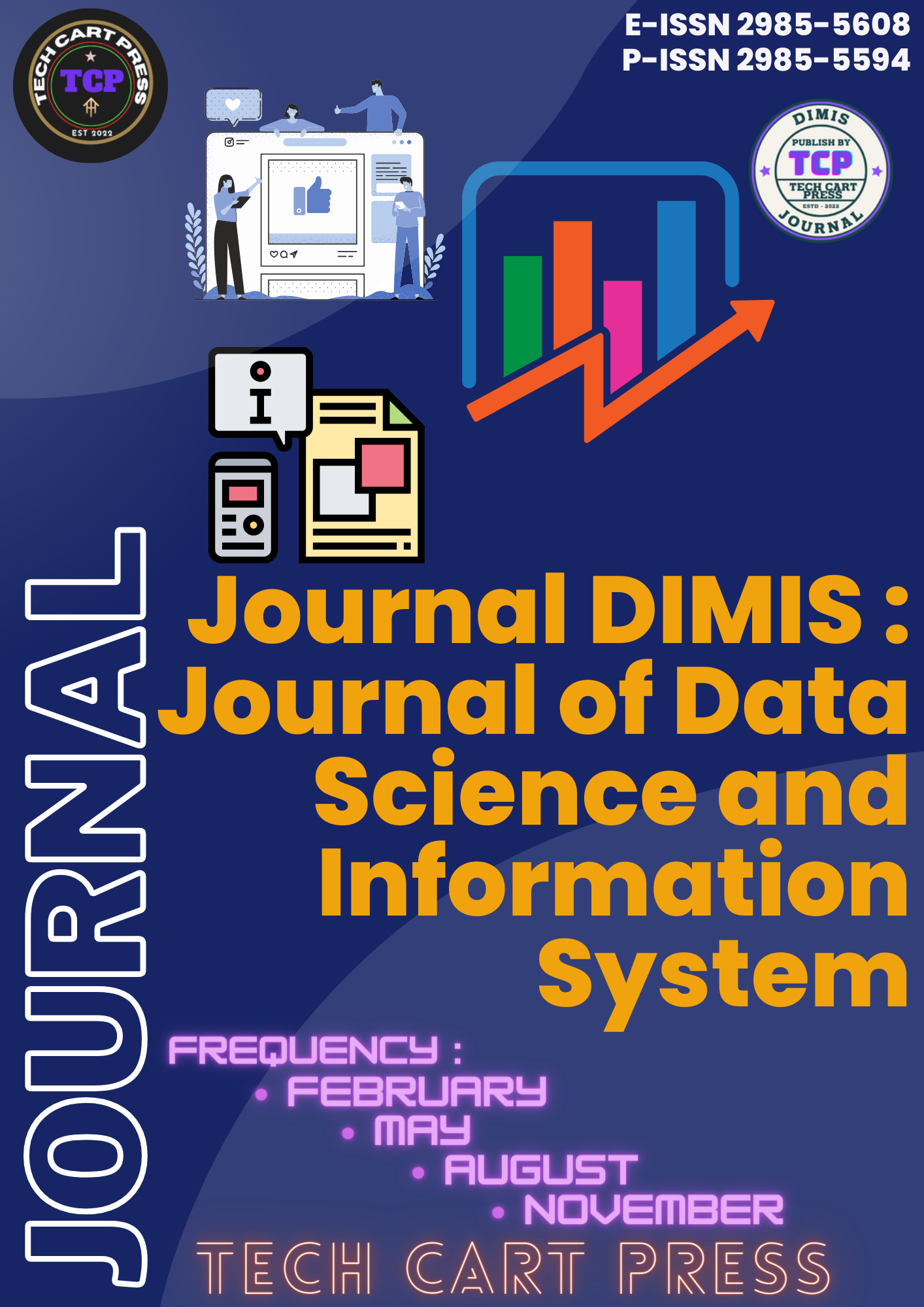Perancangan Sistem Penentuan Insentif Pegawai Menggunakan Metode Grey Relational Analysis
Abstract
Employee performance Incentive is an additional income given to employees as a form of appreciation for their contribution and performance in achieving company goals, this Incentive can be given based on the results of performance evaluations conducted by the company. The problem in determining employee incentives is the unclarity of performance evaluation criteria which can result in unfairness in determining the amount of incentives for each individual. In addition, if the incentive system cannot accurately consider individual contributions, it can hurt employees who work hard and are innovative but do not get the recognition they deserve, and potentially increase turnover rates in the company. Application of the Grey Relational Analysis (GRA) Method in employee performance appraisal involves several steps. First, determine the relevant performance appraisal criteria. Next, use the GRA method to calculate the level of relationship between each employee's performance and predetermined criteria. By using GRA, it can determine the relative performance rating of each employee based on the level of conformity or relation to the criteria set. The final results of the employee ranking showed the results of the first rank with a GRG value of 3.4881 obtained by YSF Employees, the second rank with a GRG value of 3.1667 obtained by MD Employees, the third rank with a GRG value of 2.5238 obtained by PMB Employees. This result becomes a recommendation for companies in determining employee incentives using a decision support system model.
References
K. Mausam, A. Pare, S. K. Ghosh, and A. K. Tiwari, “Thermal performance analysis of hybrid-nanofluid based flat plate collector using Grey relational analysis (GRA): An approach for sustainable energy harvesting,” Therm. Sci. Eng. Prog., vol. 37, p. 101609, 2023.
M. Gerus-Gościewska and D. Gościewski, “Grey relational analysis (gra) as an effective method of research into social preferences in urban space planning,” Land, vol. 11, no. 1, p. 102, 2022.
R. Andika, “Kombinasi Grey Relational Analysis (GRA) dan ROC Dalam Penentuan Promosi Jabatan Supervisor,” Chain J. Comput. Technol. Comput. Eng. Informatics, vol. 2, no. 1, pp. 37–44, 2024.
S. Setiawansyah, S. Sintaro, V. H. Saputra, and A. A. Aldino, “Combination of Grey Relational Analysis (GRA) and Simplified Pivot Pairwise Relative Criteria Importance Assessment (PIPRECIA-S) in Determining the Best Staff,” Bull. Informatics Data Sci., vol. 2, no. 2, p. 57, Mar. 2024, doi: 10.61944/bids.v2i2.67.
M. O. Esangbedo, J. Xue, S. Bai, and C. O. Esangbedo, “Relaxed Rank Order Centroid Weighting MCDM Method With Improved Grey Relational Analysis for Subcontractor Selection: Photothermal Power Station Construction,” IEEE Trans. Eng. Manag., 2022, doi: 10.1109/TEM.2022.3204629.
P. Citra, I. W. Sriyasa, and H. B. Santoso, “Sistem Pendukung Keputusan Penentuan Kinerja Sales Terbaik Menggunakan Kombinasi Grey Relational Analysis dan Pembobotan Rank Sum,” J. Ilm. Comput. Sci., vol. 2, no. 2, pp. 99–108, Jan. 2024, doi: 10.58602/jics.v2i2.26.
S. Setiawansyah, “Penerapan Metode Entropy dan Grey Relational Analysis dalam Evaluasi Kinerja Karyawan,” J. Data Sci. Inf. Syst., vol. 2, no. 1, pp. 29–39, 2024, doi: 10.58602/dimis.v2i1.100.
V. S. Gunawan and Y. Yunus, “Sistem Penunjang Keputusan dalam Optimalisasi Pemberian Insentif terhadap Pemasok Menggunakan Metode TOPSIS,” J. Inform. Ekon. Bisnis, pp. 101–108, Mar. 2021, doi: 10.37034/infeb.v3i3.86.
B. Dahlan and Betrisandi, “Sistem Pendukung Keputusan Pemberian Insentif Berdasarkan Penilaian Kinerja Aparat Desa Menggunakan Metode Multi Attribute Utility Theory,” J. Tek., vol. 20, no. 1, pp. 63–76, Jul. 2022, doi: 10.37031/jt.v20i1.199.
A. Manik, S. Saniman, and M. S. Wahyuni, “Sistem Pendukung Keputusan Pemberian Bonus Kepada Karyawan Menggunakan Metode Multi Attribute Utility Theory (Maut),” J. Sist. Inf. Triguna Dharma (JURSI TGD), vol. 2, no. 5, p. 686, Sep. 2023, doi: 10.53513/jursi.v2i5.5341.
W. Juriyanto and Y. Yesfina, “Pemanfaatan Metode SAW Dalam Pengembangan Sistem Pendukung Keputusan Untuk Memberikan Insentif Kepada Karyawan Di PT. XYZ Kotawaringin Timur,” EJECTS J. Comput. Technol. Informations Syst., vol. 3, no. 2, pp. 65–70, 2024.
H. Sulistiani, Setiawansyah, P. Palupiningsih, F. Hamidy, P. L. Sari, and Y. Khairunnisa, “Employee Performance Evaluation Using Multi-Attribute Utility Theory (MAUT) with PIPRECIA-S Weighting: A Case Study in Education Institution,” in 2023 International Conference on Informatics, Multimedia, Cyber and Informations System (ICIMCIS), 2023, pp. 369–373. doi: 10.1109/ICIMCIS60089.2023.10349017.
A. Kannan and N.M.Sivaram, “Evaluation and Performance Improvement of Environmentally Friendly Sustainable Turning of 6063 Aluminum Alloy in Dry Conditions Using Grey Relational Analysis,” Int. J. Automot. Mech. Eng., vol. 21, no. 1, pp. 11085–11098, Mar. 2024, doi: 10.15282/ijame.21.1.2024.12.0858.
B. O. Samuel, M. Sumaila, and B. Dan-Asabe, “Multi-objective optimization and modeling of a natural fiber hybrid reinforced composite (P x G y E z ) for wind turbine blade development using grey relational analysis and regression analysis,” Mech. Adv. Mater. Struct., vol. 31, no. 3, pp. 640–658, Feb. 2024, doi: 10.1080/15376494.2022.2118404.
R. V. Marode et al., “Friction stir processing of AZ91 hybrid composites with exfoliated multi-layered graphene: A Taguchi-Grey relational analysis,” J. Alloys Compd., vol. 972, p. 172703, Jan. 2024, doi: 10.1016/j.jallcom.2023.172703.
T. Yang, X. Zhao, Q. Sun, Y. Zhang, and J. Xie, “Elucidating the anti-inflammatory activity of platycodins in lung inflammation through pulmonary distribution dynamics and grey relational analysis of cytokines,” J. Ethnopharmacol., vol. 323, p. 117706, Apr. 2024, doi: 10.1016/j.jep.2024.117706.
Copyright (c) 2024 Aliy Hafiz

This work is licensed under a Creative Commons Attribution-ShareAlike 4.0 International License.






